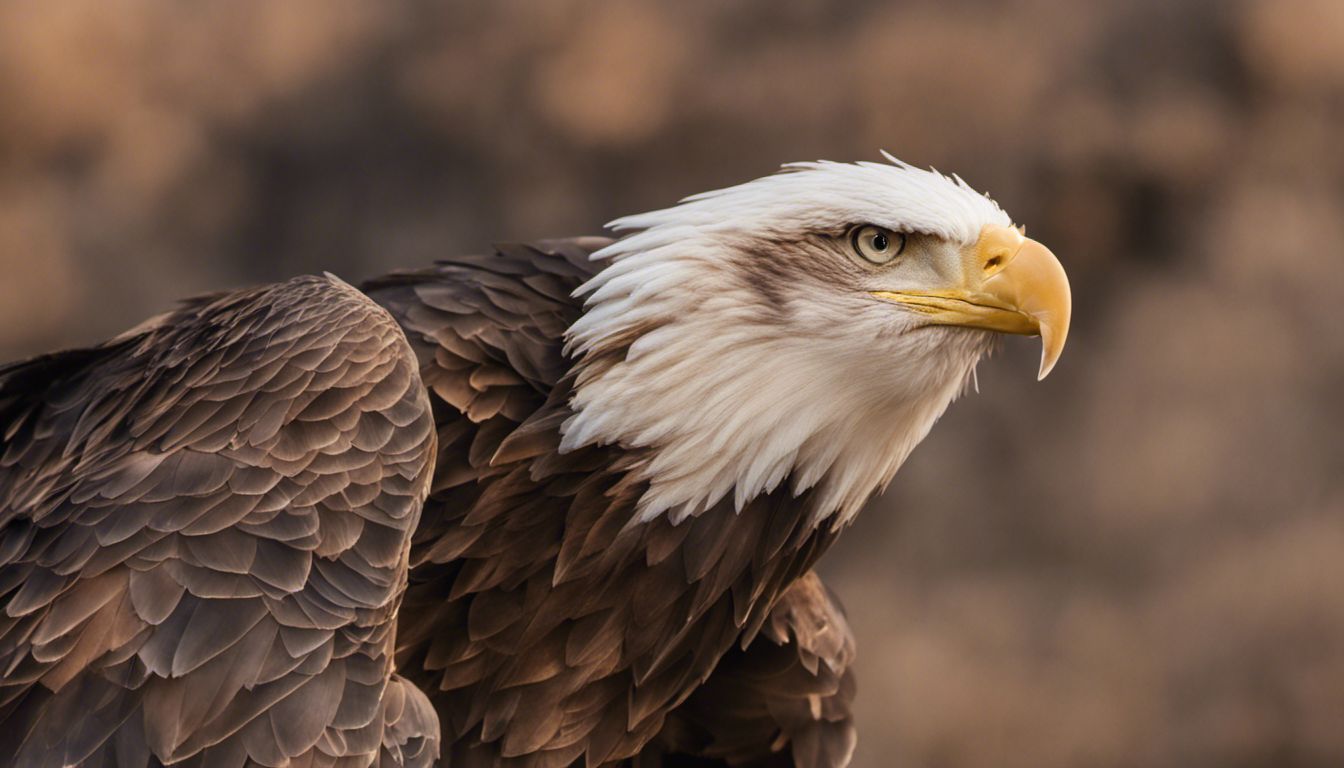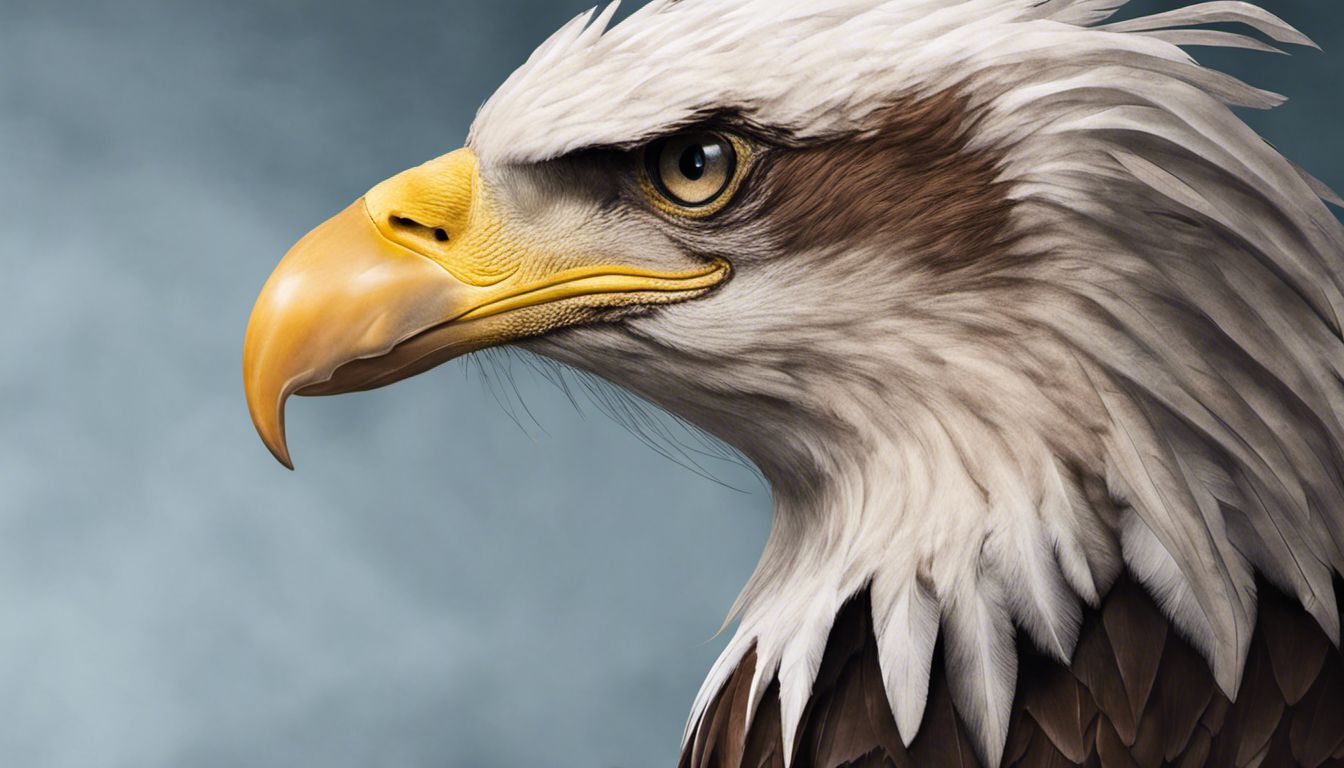Bald eagle feathers are distinguished by their size, color, and the distinct contours of the feathers from different parts of the body. Adult bald eagles have white tail and head feathers, contrasted by dark brown on the body and wings.
Key Takeaways:
- Size and Texture: The feathers of a bald eagle are large with a sturdy structure and smooth texture, particularly adapted for flight.
- Coloration: Bald eagle feathers exhibit a striking color pattern, with adults displaying iconic white head and tail feathers, and dark brown feathers on the body and wings.
- Feather Growth: Juvenile bald eagles have a mix of brown and white feathers that gradually mature to the adult coloration after about 4-5 years.
- Feather Distribution: Different types of feathers are found on the eagle’s wings, tail, and body, each serving specific functions like flight, insulation, and waterproofing.
- Legal Protection: Possession of bald eagle feathers is illegal for most people in the United States, under the Bald and Golden Eagle Protection Act, due to the species’ status as a national symbol.
Understanding Bald Eagle Feather Characteristics

Bald eagle feathers have some unique characteristics that set them apart from other birds. For example, adult plumage is easy to recognize with the stark white head and white tail feathers that contrast sharply against a dark brown body and wings. Juvenile bald eagles, on the other hand, have a mottled mix of brown and white which eventually transitions to the distinct adult coloration. Surprisingly, this transition doesn’t happen overnight; it takes about 4-5 years for young eagles to attain their iconic plumage. Another striking feature of bald eagles, both juvenile and adult, is their bright yellow legs and bills, which add to their regal appearance.
To put it simply:
- Adult Plumage: Characterized by its distinctive white head and tail, set against a dark brown body and wings.
- Juvenile Feathers: Juvenile eagles sport mottled white and brown feathers across their bodies as they haven’t yet developed the full adult coloration.
- Transition Period: It takes a bald eagle 4-5 years to fully develop its adult plumage, undergoing several molts as it matures.
The Physical Appearance Of Bald Eagle Feathers

Bald eagle feathers vary greatly in size, shape, and function, all of which contribute to their extraordinary ability to fly and adapt to different environments. The primary wing feathers, which are vital for flight, are long and strong with a highly aerodynamic structure that allows for effortless gliding and sharp maneuvers in the air. These along with the tail feathers are larger than other feathers on the bird’s body, providing the necessary lift and balance. In terms of color patterns, bald eagle feathers are a study in contrast, displaying dark and light banding that’s particularly prominent on the flight feathers of juveniles. When looking at the texture, bald eagle feathers are a marvel—being stiff and sleek on the upper side to repel water and maintain a streamlined shape, while the underside is soft and downy to provide insulation.
Specialized features of bald eagle feathers include barbicels and hooklets—tiny structures that interlock and help the feathers to form a smooth, aerodynamic surface. These features also make the feathers waterproof and wind-resistant, key for a bird spending much of its life soaring and hunting over water.
Let’s take a closer look:
- Primary Wing and Tail Feathers: These are large and robust, optimized for flight dynamics and balance.
- Size and Structure: Different feathers have varied lengths and stiffness, suited for their specific roles.
- Color Patterns: Distinct dark and light banding is evident, with variations between juvenile and adult plumage.
- Texture: Feathers are stiff and sleek on the top surface, but soft and downy underneath for insulation.
- Specialized Features: Barbicels and hooklets in the feathers maintain a streamlined, interlocked structure for flight efficiency.
Legal Considerations For Possessing Bald Eagle Feathers

When it comes to owning or collecting bald eagle feathers, there are serious legal considerations to keep in mind. Both state and federal regulations strictly prohibit the possession of these feathers by most individuals. The bald eagle carries a deep cultural significance to Native American traditions, where feathers are often used in ceremonies and as symbols of honor. For those who are eligible, such as members of federally recognized tribes, eagle feather permits are available through a special application process provided by the government. It’s crucial to understand that illegal possession often comes with hefty fines and even prison time, underlining the importance of compliance with the law.
For anyone who’s fascinated by birds and would like to collect feathers without breaking any laws, there are safe alternatives. You can source feathers from common bird species without legal protection, collect naturally molted feathers with proper authorization, or invest in replicas that honour the beauty of bald eagle feathers without causing harm or breaking the law.
Here’s the legal lowdown:
- Bald eagle feather law: Strictly limits possession to certain groups, primarily for the purpose of Native American cultural practices.
- Federal regulations: Enforced to protect bald eagles and their feathers, as part of conservation efforts.
- Native American cultural significance: Recognizes the cultural and traditional roles that eagle feathers play within Indigenous communities.
- Legal possession: Permits for legally obtaining eagle feathers are available, though they are strictly controlled.
- Eagle feather permits: Allow Native Americans to possess bald eagle feathers for religious and cultural uses.
- Consequences of illegal possession: Can include significant fines and imprisonment, highlighting the importance of following the law.
- Safe alternatives for feather collections: Options include collecting non-protected species’ feathers or acquiring feather replicas.

